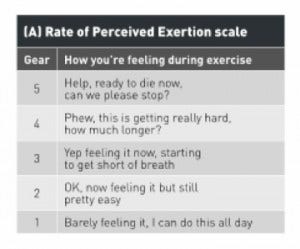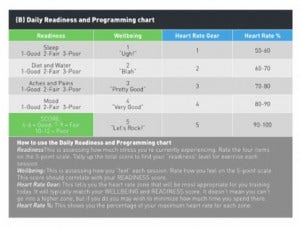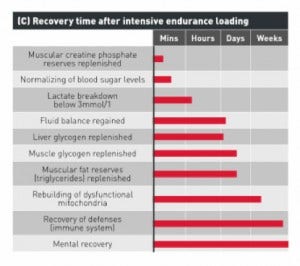Recovery & regeneration: the missing link

What if we told you that it could take you an entire week to completely recover from your beloved bootcamp or high intensity Spin class? Would you care? Do you love it so much that you would not let anything come between you and your favorite workout (or your endorphin hit)? What if we told you that training at avery high intensity consistently could actually get you fewer results? Would you think we were crazy?
We are told to push ourselves, work harder, train more and never miss a session. We believe every workout has to leave us gasping for air and bent over in pain or we won’t get results. It’s as if some school gym class brainwashing has stuck with us and as a result we thrash ourselves each workout, mindlessly programmed to believe: “no pain, no gain.”
Perhaps it’s time we step back and take a hard look at our approach. We need to really tune into the way our bodies respond to this type of training. Do we really feel that we are moving towards results or away from them? Understanding recovery and regeneration is perhaps the missing link in common fitness programming.
Don’t get me wrong, we do need to push past our comfort zone with our training to stimulate the body’s natural ability to adapt to specific applied stress and become stronger, fitter, healthier and, of course, better looking. However, how long we spend at this intensity needs further investigation. What’s missing from the picture is the knowledge that our body processes all stress the same: whether it be physical, mental or emotional, it all goes through the same funnel and into the same bucket. Essentially our wellbeing will determine our state of readiness for exercise on the day. So when you come into the gym for a heavy leg session after a stressful day at work, eating junk food and most likely with little hydration, your body will be in a pre-stressed state, which will impact your quality of movement, your breathing, the hydration of your tissue and could increase your risk of injury or perhaps your ability to burn fat or gain muscle. Essentially, your bucket overflows!
So how do we know the right intensity? Are we overtraining or are we under-recovering?
Imagine if we were all cars — yes I know the analogy is popular in fitness but it works well when describing the way we work – we’d all have an engine of varying sizes (cardiac fitness), a steering wheel, four wheels and a transmission. Now some of us would be built more like a Porsche or Ferrari and some of us would be built more like, well, perhaps an ice cream truck or a bus. Regardless of our make or model, we all have five gears within our transmission and need to use each of them daily depending on what we’re trying to achieve that day, the conditions and the terrain of our environment. In our body, each gear uses a slightly different fuel source (Glycogen, Fatty Acids, ATP or PC). Now, let’s say we all needed to get to a destination that was 100 miles away. Those of us who shift straight into gear five may have great speed but would run out of gas before we got to our destination. Those of us who stayed in gear one would get there, but very, very slowly. This is how our energy systems work: you have to use all five gears. Training in one gear all the time is incomplete. After all, what would happen to your car if you drove at high speeds all the time? It would be difficult to turn corners, you’d probably crash regularly and your tires would be bald, i.e., all potential signs of injuries.
The most accurate way to determine which gear you’re training in is to measure your heart rate percentage. This is most accurately done with a HR monitor. If you don’t train with one then you can also use an RPE (or Rate of Perceived Exertion) scale (chart A).

So now you know what gear you’re training in, let’s apply this to the Daily Readiness and Programming chart (chart B) to see how ready you are to train today and what you’re capable of doing.

First step is to rate your Readiness (column 1) by scoring yourself on the areas of sleep, diet and water, aches and pains and mood. Compare this to the Wellbeing Scale (column 2) — they should match. Refer to which HR Gear (column 3) is most appropriate for you to train in that day and the appropriate percentage of Heart Rate (column 4).
In order to work out the best work to rest ratio, here are some important factors to consider. Depending on your overall fitness level and perhaps your genetic make up, your body can sometimes take longer than you think to recover from high intensity training.
Here (chart C) is an example of the recovery time from intensive endurance training (from “Training with the Heart Rate Monitor” by Kuno Hottenrott). What’s interesting is that it can take weeks for our immune system to recover, and for mental recovery. Perhaps it’s no wonder that with the fast paced, high stress lives we now lead, that there is an increased incidence of disease. Remember, we get one vehicle to take us on our journey we call life. Try to look after it and use it well! Listen to your body each day and adapt your load or intensity to how you’re feeling that day and what you’re capable of putting in and you should see better results, fewer injuries and hopefully less disease. And remember, have fun!
